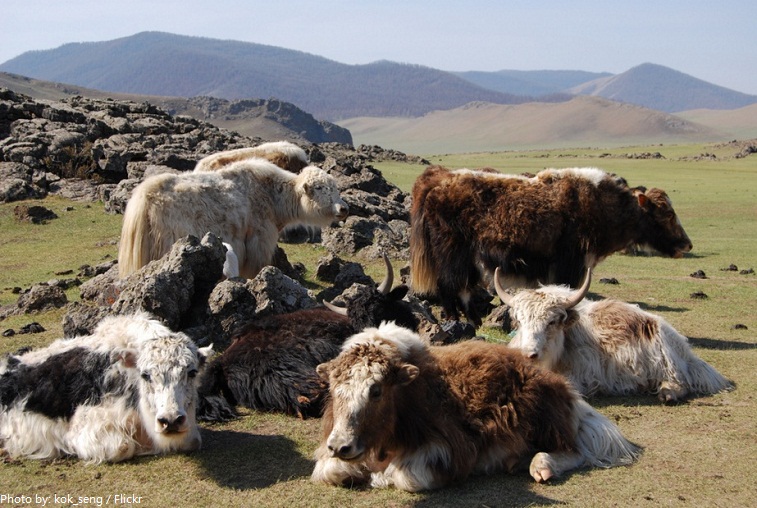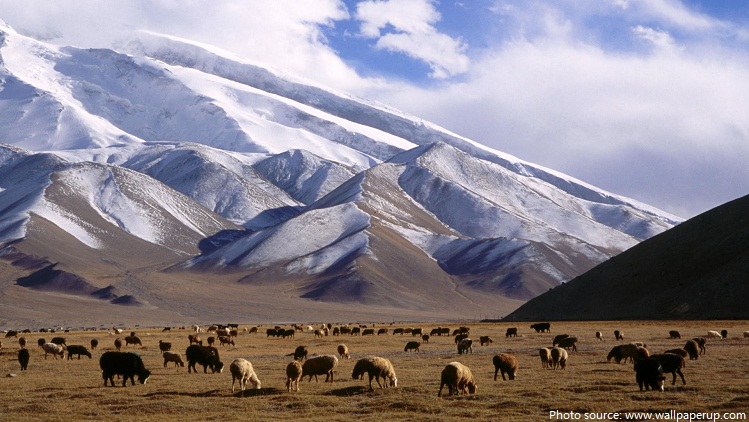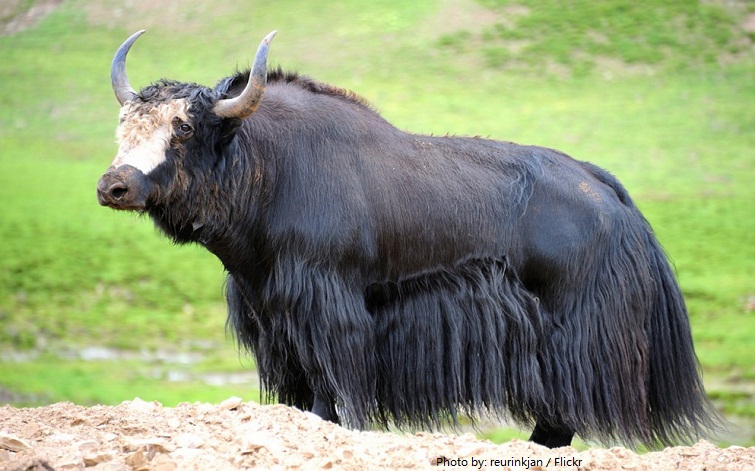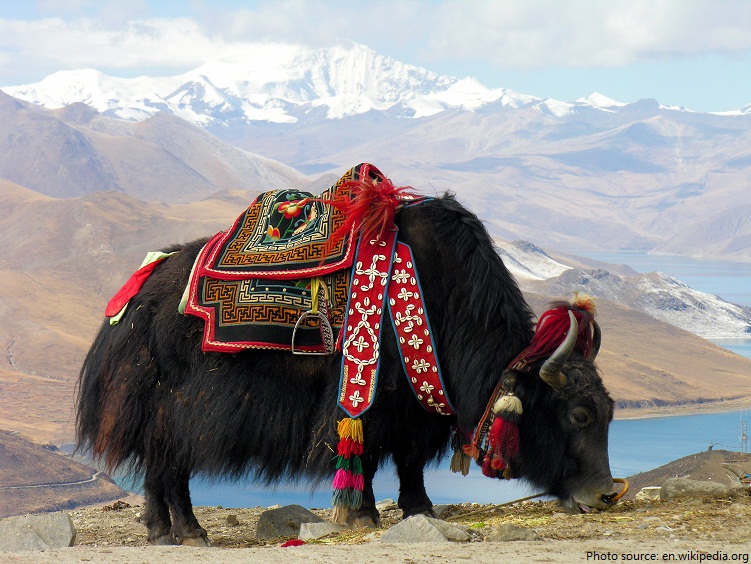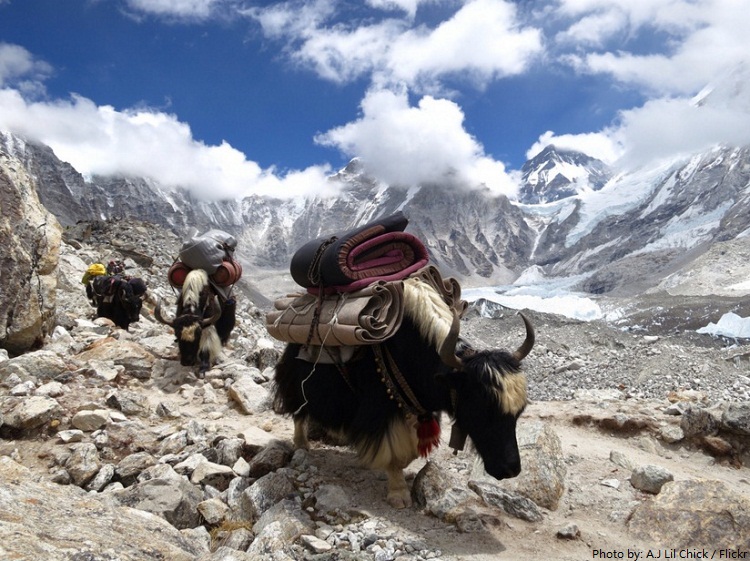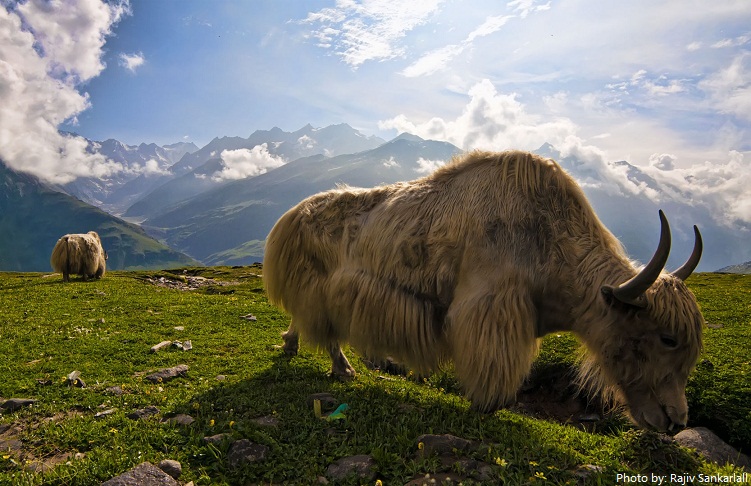The yak is a long-haired bovid found throughout the Himalaya region of southern Central Asia, the Tibetan Plateau and as far north as Mongolia and Russia.
Most yaks are domesticated animals, though there is also a small, vulnerable wild yak population.
Bos mutus is the scientific name for the wild yak and Bos grunniens for domesticated yak.
90% of all known yaks can be found in Tibetan Plateau in the Himalayas.
Yak is a close relative of buffalo and bison.
The average lifespan of a yak is about 20 years in the wild and slightly longer when in captivity.
The yak is a herd animal that tend to gather in herds from 10 yaks to 100 yaks, most of which are females and their young.
The yak is the third largest beast in Asia, after the elephant and rhino.
Wild yak adults stand about 1.6 to 2.2 meters (5.2 to 7.2 feet) tall at the shoulder and weigh 305–1,000 kilograms (672–2,205 pounds).The head and body length is 2.5 to 3.3 meters (8.2 to 11 feet), not counting the tail of 60 to 100 centimeters (24 to 39 in).The females are about one-third the weight and are about 30% smaller in their linear dimensions when compared to bull wild yaks.
Domesticated yaks are much smaller, males weighing 350 to 580 kilograms (770 to 1,280 pounds) and females 225 to 255 kilograms (496 to 562 pounds).
Body of yak is covered with thick, wooly coat. It can be brown, black or white in color. Main purpose of the fur is preservation of the body heat and protection against low outer temperatures.Domesticated yak’s coat is less furry, but more diverse in color than the wild yak.
They have small ears and a wide forehead, with smooth horns that are generally dark in color. In males, the horns sweep out from the sides of the head, and then curve forward; they typically range from 48 to 99 centimeters (19 to 39 in) in length.The horns of females are smaller, only 27 to 64 centimeters (11 to 25 inches) in length, and have a more upright shape.
Yaks have long, bushy tails which are used for the production of fake beards in certain Chinese theaters.
Hooves of yaks are split, which facilitate movement across the rocky and icy terrains.
Yaks can climb up to 6,100 meters (20,000 feet) above sea level.
Among domesticated animals, yaks are the highest dwelling animals of the world, living at 3,000–5,000 meters (9,800–16,400 feet).
They are able to live at such high altitudes because they have a large lung capacity allowing them to inhale lots of oxygen.
Additionally, the yak has a powerful digestive system that allows food to digest at a temperature of 40ºC (104°F).This high internal heat keeps the yak warm even in temperatures as low as -40ºC (-40°F).
They are also able to swim in the nearly frozen waters without disturbing normal body temperature.
Yaks are so well adapted to the heights that they cannot normally live below 3,000 meters (9,800 feet).They suffer from heat exhaustion in temperatures above 15°C and are very susceptible to disease.
Yaks are herbivores.A great deal of the yaks time is spent on grassy plains in the mountains grazing on grasses, herbs and wild flowers.
Similar to other cow species, the yak has more than one stomach which it uses to successfully get all the nutrients out of the plants that it eats.
Yaks grunt and, unlike cattle, are not known to produce the characteristic bovine lowing (mooing) sound.
Amongst yaks living in the wild, births usually occur between May and June and a single calf is born every other year.
The female will find a secluded spot to give birth, but the calf is able to walk within about ten minutes and the pair will rejoin the herd.
Yak babies are completely independent by the time that they are a year old and they are fully grown when they are between 7 and 8 years old.
Yaks are highly friendly in nature and there has been very little documented aggression from yaks towards human beings, although mothers can be extremely protective of their young and will bluff charge if they feel threatened.
Historically, the main natural predator of the wild yak has been the Tibetan wolf, but brown bears and snow leopards have also been reported as predators in some areas.
The wild yak is threatened by loss of habitat and over hunting by humans.
The yak is the most important domesticated animal for Tibet highlanders in Qinghai Province of China.
Yaks supply transport, milk, protein, fur, hoof, bone, skin, and tail.Even yak’s dung is commonly used for fuel for the fire.
In local communities, yak bone is often made into exquisite handicrafts, including combs, buttons and ornaments.
In parts of Tibet and Karakorum, yak racing is a form of entertainment at traditional festivals and is considered an important part of their culture.
Yak polo, played on yaks instead of horses, was pioneered in Mongolia a decade ago.
